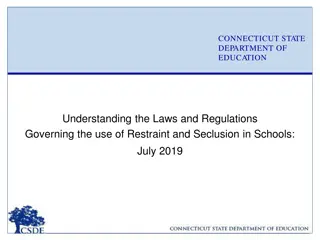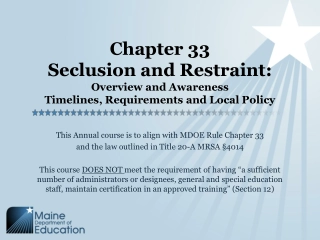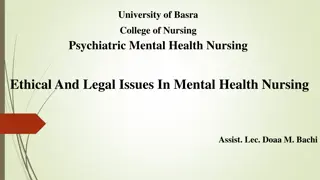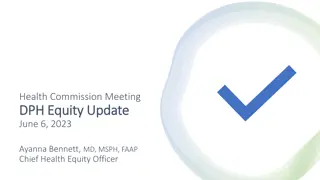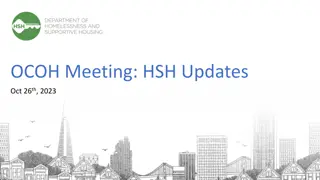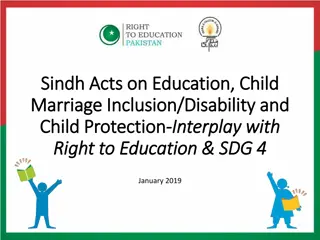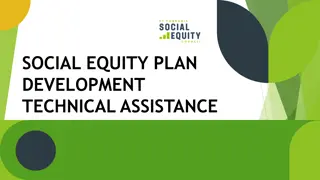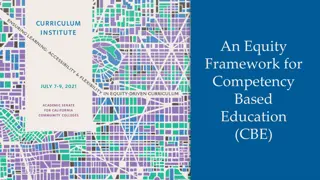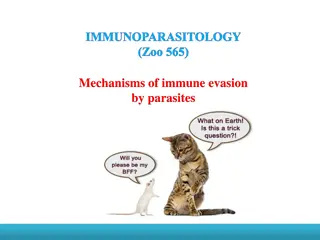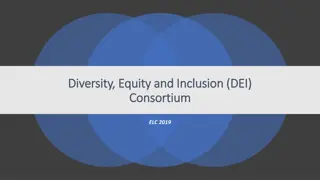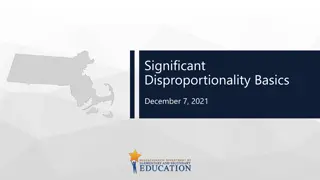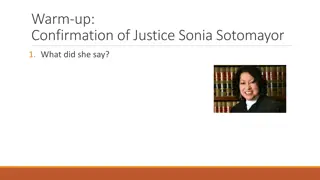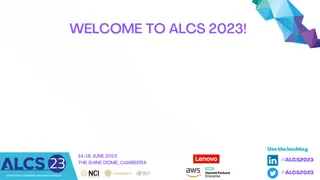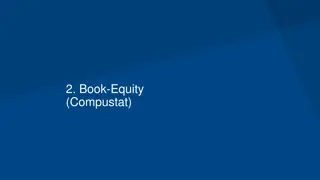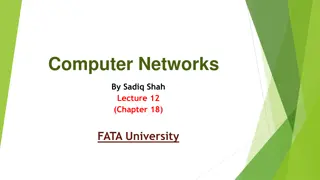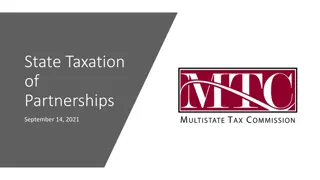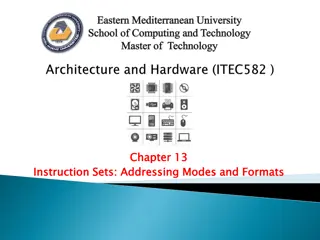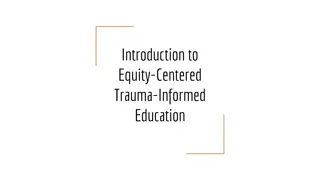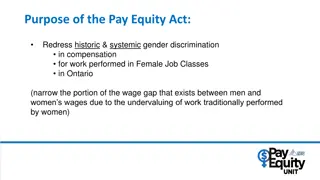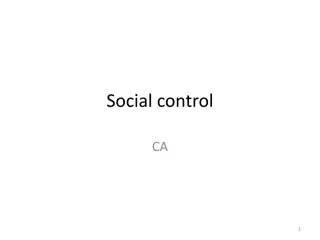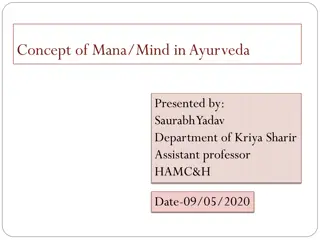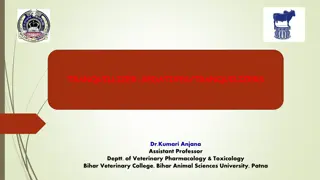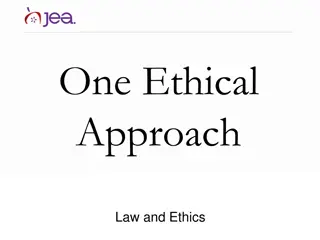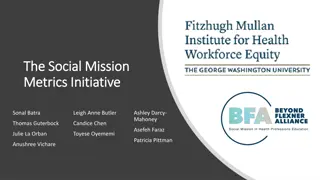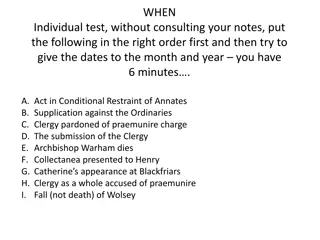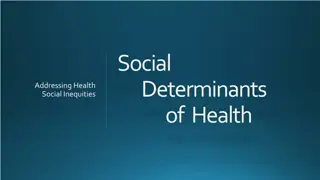Equity in Education: Addressing Restraint and Seclusion as Equity Issues
The Oregon Department of Education emphasizes equity and excellence in education for over 560,907 diverse students and 75,807 educators. They work towards providing a high-quality, inclusive learning experience for every student in Oregon, ensuring they graduate with a plan for their future. The department's focus on equity extends to addressing restraint and seclusion practices as equity issues, recognizing the importance of fair policies and opportunities for marginalized youth and students.
Download Presentation

Please find below an Image/Link to download the presentation.
The content on the website is provided AS IS for your information and personal use only. It may not be sold, licensed, or shared on other websites without obtaining consent from the author. Download presentation by click this link. If you encounter any issues during the download, it is possible that the publisher has removed the file from their server.
E N D
Presentation Transcript
Restraint & Seclusion December 2021 1
About Us The Oregon Department of Education works in partnership with school districts, education service districts and community partners to foster equity and excellence for every learner; Together, we serve over 560,907* K-12 students and support 75,807* school employees, including teachers, administrators and classified staff; We believe every student should have access to a high-quality, well-rounded learning experience; and We work to ensure every student in Oregon graduates with a plan for their future. *Data from October 2021 Oregon Department of Education 2
Disclaimer These materials constitute the Oregon Department of Education s interpretation of various state laws and are provided to support public education programs understanding of their obligations under these laws. The information in these materials is subject to change based on future legal and policy changes. These materials are intended for informational purposes only and do not constitute legal advice. v 3
Who We Serve Student Diversity 560,907 Students More than 200 languages spoken Economically Disadvantaged: 53% Ever English Learners: 18% Homeless: 3% Lesbian/Gay /Bisexual: 12.6% Mobile Students: 11% Students with Disabilities: 15% 75,807 Educators Staff of Color 11.4% of Teachers 12.3% of Administrators 16.4% of Counselors 21.1% of Educational Assistants 197 Districts 1,257 Schools 133 Charter Schools 19 Education Service Districts Oregon Department of Education, 2020-21 School Year 4
Equity Education equity is the equitable implementation of policy, practices, procedures, and legislation that translates into resource allocation, education rigor, and opportunities for historically and currently marginalized youth, students, and families including civil rights protected classes. This means the restructuring and dismantling of systems and institutions that create the dichotomy of beneficiaries and the oppressed and marginalized. Oregon Department of Education 5
Restraint and Seclusion are Equity Issues In the 2015 2016 school year, 122,000 students across the country were restrained or secluded. Student group Percent total population Percent subjected to restraint Percent subjected to seclusion v Students with disabilities 12% of total enrollment 71 % 66 % African American students 15% of total enrollment 27 % 23 % 6 Civil Rights Data Collection (2018)
Restraint and Seclusion Restraint and seclusion are safety responses used as a last resort when risk of harm or injury is high, when lesser interventions are not effective, and when an emergency response may reduce that risk. Restraint and seclusion are not behavioral or therapeutic interventions. Restraint or seclusion may not be used for discipline, punishment, retaliation or convenience of personnel, contractors, or volunteers of the public education program. v 7
What is the Definition of Restraint? Restraint means the restriction of a student s actions or movements by holding the student or using pressure or other means. v 8
Restraint Does Not Include Holding a student s hand or arm to escort the student safely and without the use of force from one area to another. Assisting a student to complete a task if the student does not resist the physical contact. v 9
Restraint Does Not Include Providing reasonable intervention with the minimal exertion of force necessary if the intervention does not include a restraint prohibited under ORS 339.288 and the intervention is necessary to: a. Break up a physical fight. b. Interrupt a student s impulsive behavior that threatens the student s immediate safety, including running in front of a vehicle or climbing on unsafe structures or objects. c. Effectively protect oneself or another from an assault, injury or sexual contact with the minimum physical contact necessary for protection. 10
How to Report an Incident that is Not Restraint Intervention in a manner that is not restraint during an incident would fall under the district's Student Code of Conduct policy and would be communicated and documented in accordance with the policy, which may include: Parent phone call Incident report Referral Other appropriate verbal and/or written documentation that is consistent with district policy v 11
Prohibited Restraints Chemical restraint v Mechanical restraint Prone restraint Supine restraint 12
Prohibited Restraints Any restraint that involves the intentional placement of the hands, feet, elbow, knee, or any object on a student s neck, throat, genitals, or other intimate parts. Any restraint that causes pressure to be placed, or creates a risk of causing pressure to be placed, on the stomach or back by a knee, foot, or elbow bone. Any action designed for the primary purpose of inflicting pain. v 13
Prohibited Restraints Any restraint that places, or creates a risk of placing pressure on a student s neck or throat. Any restraint that places, or creates a risk of placing pressure on a student s mouth, unless the restraint is necessary for the purpose of extracting a body part from a bite. Any restraint that impedes, or creates a risk of impeding breathing. v 14
Prohibited Restraints Any restraint that involves the intentional and nonincidental use of a solid object, including a wall or the floor, to impede a student s movement is prohibited, unless the restraint is necessary to prevent an imminent life-threatening injury or to gain control of a weapon. v The use of a solid object, including a piece of furniture, a wall, or the floor, by public education program personnel performing a restraint, is not prohibited if the object is used for the personnel s own stability or support while performing the restraint and not as a mechanism to apply pressure directly to the student s body. 15
What is the Definition of Seclusion? Seclusion means the involuntary confinement of a student alone in a room from which the student is physically prevented from leaving. Seclusion includes, but is not limited to, the involuntary confinement of a student alone in a room with a closed door, whether the door is locked or unlocked. v 16
Seclusion Does Not Include Removing a student for a short period of time to provide the student with an opportunity to regain self-control if the student is in a setting from which the student is not physically prevented from leaving. Leaving a student alone in a room with a closed door for a brief period of time if the student is left alone for a purpose that is unrelated to the student s behavior. v 17
Seclusion: Examples and Nonexamples Example Non-Example Student is alone and prevented from leaving the room after a room clear with the teacher/staff person on the outside of the room. The room is cleared and a teacher/staff person remains in the room with the student to assist with needs. v The student is alone in the classroom and prevented from leaving the designated area with the teacher/staff person outside of the designated area. The student is not alone and there is a teacher/staff person present with that student in the designated area. 18
Threshold for intervention Restraint Seclusion The student s behavior imposes a reasonable risk of imminent and substantial physical or bodily injury to the student or others, and less restrictive interventions would not be effective. The student s behavior imposes a reasonable risk of imminent and serious bodily injury to the student or others, and less restrictive interventions would not be effective. v 19
Threshold Definitions Restraint Seclusion Serious bodily injury means any Substantial physical or bodily v significant impairment of the injury means any impairment of physical condition of a person, as the physical condition of a person determined by qualified medical that requires some form of medical personnel, whether self-inflicted or treatment. inflicted by someone else. 20
If Restraint or Seclusion is Utilized... The student s behavior imposes a reasonable risk. Less restrictive interventions would not be effective. Used only for as long as the student s behavior poses a reasonable risk. Must be implemented by those who are trained. Requires continuous monitoring for the duration of the restraint or seclusion. v 21
Time Limits and Rules for Seclusion and Restraint If restraint or seclusion continues for more than 30 minutes: Adequate access to bathroom or water breaks must be established after 30 minutes. Every 15 minutes after the first 30 minutes of the physical restraint or seclusion, an administrator for the public education program must provide written authorization for the continuation, including providing documentation for the reason the physical restraint or seclusion must be continued. Personnel of the public education program must immediately attempt to verbally or electronically notify a parent or guardian of the student. Continuous 360 degree monitoring of the situation for the duration. v 22
Functional Behavioral Assessment Districts must conduct a functional behavioral assessment and develop, review or revise a behavior intervention plan within 45 school days of receiving parental consent to conduct the assessment for every student who has: v An individualized education program or a 504 Plan; and Placed the student, other students or staff at imminent risk of serious bodily injury as a result of the student s behavior. If a functional behavioral assessment has been previously completed, the school district must review and/or revise the existing functional behavior assessment. 23
Functional Behavioral Assessment When a behavior intervention plan is developed, reviewed or revised, the school district must: Ensure that the behavior intervention plan is based on a functional behavioral assessment conducted by a qualified person; Ensure that the behavior intervention plan addresses the student s needs; v Allow service providers involved in the incident when the student, other students or staff were at imminent risk of serious bodily injury to provide meaningful input into the development, review or revision; Inform the service providers about portions of the behavior intervention plan that are relevant to them and about any training opportunities for the service providers; and Ensure that the behavior intervention plan was correctly implemented before revising.
Restraint and Seclusion Reporting Requirements Verbal or electronic parent/guardian notification of the incident by the end of the school day when the incident occurred. Written documentation of the incident within 24 hours. Timely notification of a debriefing meeting to be held and of the parent's or guardian's right to attend. A debriefing meeting must be held within two school days of the incident and must include all personnel of the public education program who were involved in the incident and any other appropriate personnel. Written notes must be taken. A copy of the written notes must be provided to parent or guardian. v 25
Restraint & Seclusion: 5 Incidents in a School Year If a student is involved in five incidents in a school year involving restraint or seclusion, a team consisting of: Personnel of the public education program Parent or guardian of the student v must be formed for the purposes of: Reviewing and revising the student's behavior plan and Ensuring the provision of any necessary behavioral supports. 26
Approval of Restraint and Seclusion Training Programs for School Staff Teach evidence-based techniques that are shown to be effective in the prevention and safe use of physical restraint or seclusion. Provide evidence-based skills training related to: Positive behavior support Conflict prevention De-escalation Crisis response techniques Provide training consistent with the philosophies, practices and techniques for physical restraint and seclusion that are established by rule or policy of the Department of Human Services. v 27
Prevention Practices Anticipate - Time of day - Time of year - Keep a short, clear set of rules visible and talk about them. Deliver - The best version of yourself. Understand - Ages and stages of students. Learn - What to ignore and what to pay attention to. Teach - and model the positive expectations relentlessly. v 28
Annual Report to ODE on Use of Restraint and Seclusion The total number of incidents involving restraint. The total number of students placed in restraint. The total number of incidents involving seclusion. The total number of students placed in seclusion. The total number of seclusions in a locked room. The total number of seclusion rooms available, including a description of the dimensions and design of the rooms. The total number of incidents that resulted in injuries or death to students or personnel. The number of students who were placed in restraint or seclusion more than 10 times in a school year and an explanation of what steps have been taken to decrease the use for each student. The number of incidents involving untrained staff. The demographic characteristics of students. v 29
District Annual Report on Use of Restraint and Seclusion Each entity shall make its annual report about restraint and seclusion available to The public at the entity's main office and the website of the entity. The school board or governing body overseeing the entity. If the entity is an education service district, the component school districts of the education service district. If the entity is a public charter school, the sponsor of the public charter school. Parents and guardians of students in a public education program shall be advised at least once each school year about how to access the report. v 30
Technical Assistance Manual and ODE Sample Forms v 31 Link- HERE
Oregon Administrative Rules for Restraint & Seclusion 581-021-0550: Definitions - Click here 581-021-0553: Use of Restraint and Seclusion in Public Education Programs - Click here 581-021-0556: Program s Procedures Regarding Restraint & Seclusion - Click here 581-022-2267: Annual Report on use of Restraint and Seclusion - Click here 581-021-0563: Approval of Restraint and Seclusion Training Programs for School Staff - Click here 581-021-0566: Required Use of Approved Restraint and Seclusion Programs - Click here 581-021-0568: Standards for Seclusion Rooms - Click here 581-021-0569: Use of Seclusion Cells Prohibited - Click here 581-021-0570: Complaint Procedures - Click here 581-015-2181: Functional Behavioral Assessments- Click here 32
Here to Help Lisa Bateman 503-947-5655 - lisa.bateman@ode.state.or.us Follow us on Twitter! @ORDeptEd 33


